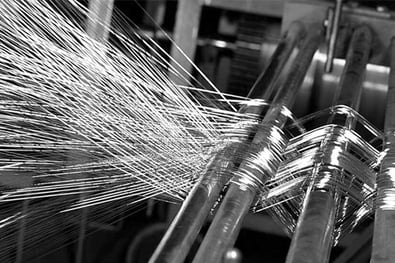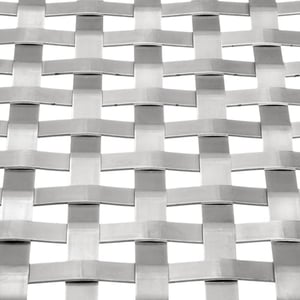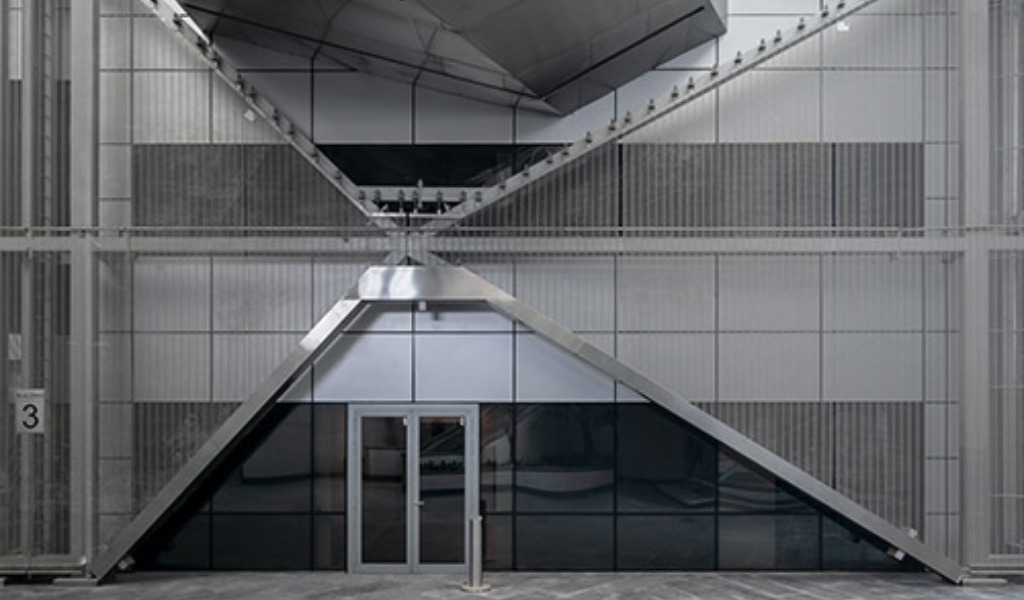Metal Mesh Fabric vs. Cascade Coil Drapery: Which Is Best for Me?
In the world of architectural design, architects are faced with the responsibility of determining which design materials will work best for their upcoming project(s). As there are dozens of design materials with their own unique qualities, this can often prove to be a difficult task.
When working on interior applications, for example, you may be considering both architectural wire mesh and cascade coil drapery. But to ensure you select the material, you must understand the two compare.
Having said that, how does a cascade coil drapery differ from architectural mesh?
As a prominent architectural mesh supplier with over 20 years of experience, W.S. Tyler strives to help you understand what design material best portrays your vision.
To that end, this article will cover:
- What metal mesh fabric is
- What cascade coil drapery is
- The benefits of metal mesh fabric
- The drawbacks of metal mesh fabric
- The benefits of cascade coil drapery
What Is Metal Mesh Fabric?
Metal mesh is a network of assorted metallic wires that take on a decorative pattern after undergoing a centuries-old weaving technique. These metallic wires can be made from a wide range of alloys; however, an architectural grade 316 stainless steel is generally used.

As the process has been perfected over the years, metal mesh fabric suppliers can customize almost every aspect of the mesh. This includes the mesh pattern, panel size, percentage of open area, and wire diameter.
What Are the Benefits of Using Metal Mesh Fabric?
When compared to coil mesh, one of the most significant advantages metal mesh fabric has is that it can be woven with both round and flat wires. This allows mesh suppliers to provide a more customized solution that turns your vision into a reality.
 |
 |
Metal mesh fabric can also be fabricated using a wire selection that is more vast than the wire selection that can be used to form coil mesh. This also means that metal mesh fabric solutions are typically more readily available.
Another significant benefit of metal mesh fabric is that the percentage of open area is easily manipulated. This means when working on various projects, such as parking garage structures, air ventilation regulations.
What Are the Disadvantages of Using Metal Mesh Fabric?
A notable disadvantage metal mesh fabric has, especially when compared to materials like coil mesh, is that it can be more challenging to ship. This is because the rigidity of the individual wires forces mesh suppliers to ship mesh panels in large rolls with an increased diameter in an effort to not compromise the integrity of the mesh.
Additionally, it should be noted that metal mesh fabric panels have a width limitation of 10 feet. This means that architects working on a design that requires panels wider than 10 feet will have to either incorporate an intricate framing system that can house several panels seamlessly or explore other design materials.
What Is Cascade Coil Drapery?
Much like spiral mesh, cascade coil drapery is defined as a series of wires that undergo a specialized drawing process to transform raw straight wires into coiled wires of a specific wire diameter. That said, unlike spiral mesh, the coiled wires are interlocked with one another without the use of a shute wire.
As there is no shute wire, the ends of each coil are spiraled inward and attached to the next coil in the weave. This helps keep the coil interlocked and secure.
What Are the Benefits of Using Cascade Coil Drapery?
The most prominent benefit of using is the fact that it takes on the free-flowing characteristics of fabric drapery. The most significant difference is that the metallic wires deliver heightened durability that allows coil drapery to be applied to areas such as fireplaces and high-traffic walkways.
Additionally, because coil drapery is constructed by threading the coils with the previous coil in the drapey, there is a heightened level of spliceability. As a result, contracts can add or take away wires on-site if needed.
What Are the Disadvantages of Using Cascade Coil Drapery?
While coil drapery allows architects to mimic cloth drapery, it also makes it hard to work with when attempting to implement it in a way that flows seamlessly into the design. This is due to the fact that the free-flowing properties of the interlocked coils make it hard for it to create a flat design.
Another major disadvantage of using coil drapery is that the openness of the drapery makes it harder to visualize graphics. Metal mesh fabric, on the other hand, can be outfitted with various graphics or signage designs through the use of digital print or paint.
This is because most weave patterns leave the wires exposed and placed closely together, make for a panel-like canvas that can be used to portray highly detailed imagery.
Deliver Awe-Inspiring Wall Designs With Metal Mesh Fabric
Metal mesh fabric is a series of metallic wires that are methodically interlocked together, forming decorative mesh panels. Cascade coil drapey, on the other hand, is a metallic fabric that is constructed from several coiled wires without the use of shute wires.
That said, the rigid properties of metal mesh fabric allow it to take on a form that is entirely flat. This is ideal for countless applications, such as wall design.
Having helped architects and contractors leverage the properties of metal mesh fabric for over 20 years, W.S. Tylers is here to help you weave your vision into reality.
For more information on how metal mesh fabric can be used to furnish the walls of a structure, read the following article:
About Ronnie Brown
Ronnie is the Content Writer for W.S. Tyler and has four years of experience as a professional writer. He strives to expand his knowledge on all things particle analysis and woven wire mesh to leverage his exceptional writing and graphic design skills, creating a one-of-a-kind experience for customers.




